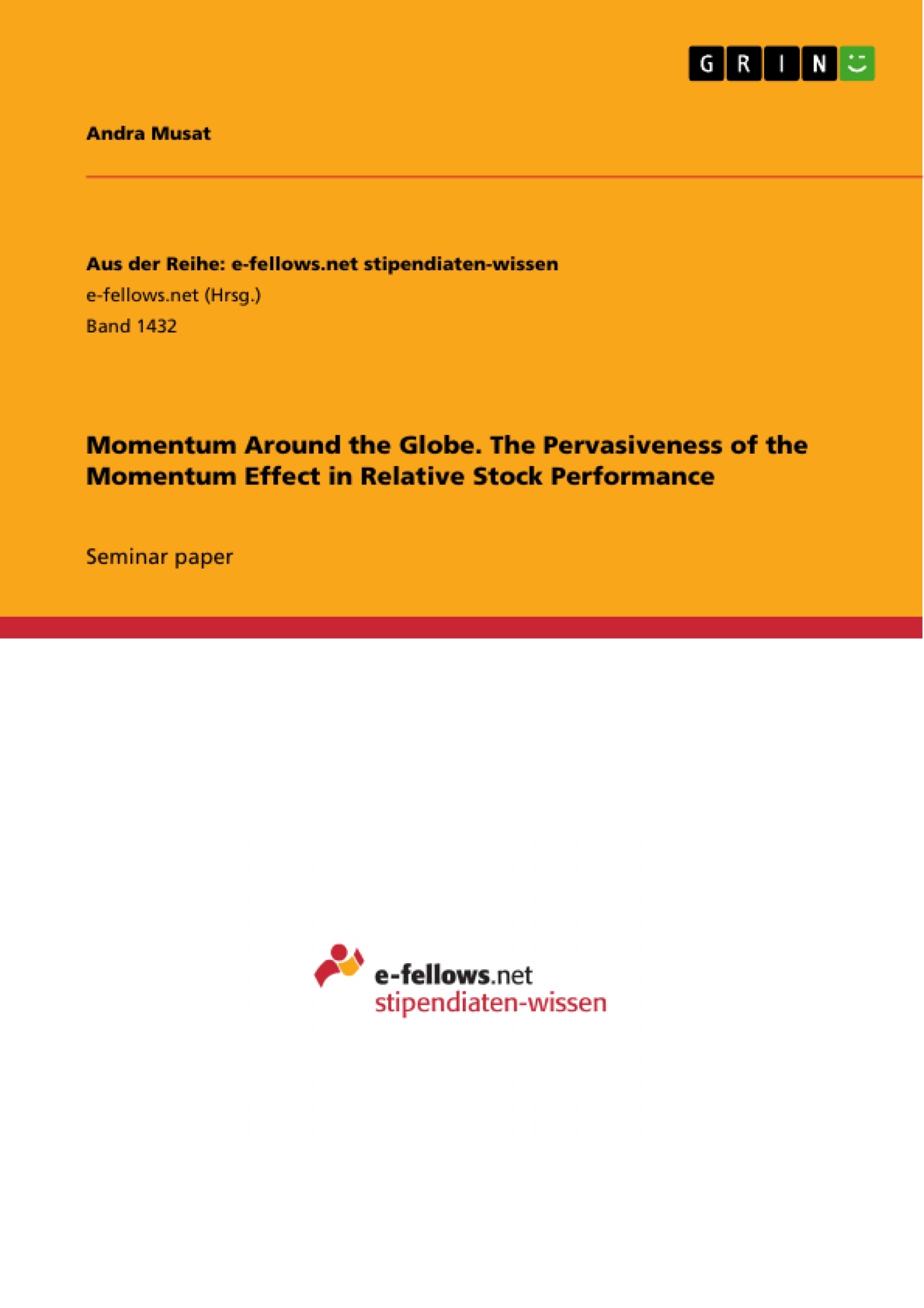Extensive research has been dedicated to the momentum effect in the past two decades since it was first documented in 1993 by Jegadeesh and Titman. Put simply, momentum can be understood as persistence in relative stock performance: stocks which have performed well over the past three to twelve months continue to outperform stocks which have performed poorly over the next three to twelve months.
The aim of this paper is to gather, compare and evaluate the available evidence so far to show that momentum is effective globally, with a focus on analyzing co-movement. Besides the geographical dimension, the paper will also look at the extent to which profitable momentum returns are prevalent in time and are not only confined to stocks, but are characteristic for much more asset classes. As such, the main contribution of the paper is the brief analysis of the pervasiveness of the momentum effect along three dimensions: geographical, temporal and across asset classes.
Table of Contents
- Introduction
- The pervasiveness of the momentum effect globally
- Emerging markets
- Methods to examine co-movement
- Correlations
- Other methods
- The pervasiveness of the momentum effect across asset classes globally
- The pervasiveness of the momentum effect in time
- Conclusions
Objectives and Key Themes
This paper aims to examine the global prevalence of the momentum effect in financial markets. It seeks to demonstrate that momentum is not only present across different geographical regions but also persists over time and extends to asset classes beyond stocks.
- Global pervasiveness of the momentum effect
- Co-movement of momentum returns across countries
- Momentum in various asset classes
- Temporal stability of momentum returns
- Challenges to the efficient market hypothesis
Chapter Summaries
The paper begins by introducing the momentum effect, a financial anomaly challenging the efficient market hypothesis. It describes how momentum, the persistence of relative stock performance, is observed globally with only a few exceptions. The study explores the prevalence of momentum in emerging markets and introduces various methods for examining co-movement in momentum returns across different countries.
The paper then delves into the presence of momentum in asset classes beyond stocks, examining the potential correlations among different assets. Finally, the paper examines the evolution of momentum returns over time, assessing the stability and prevalence of momentum in different periods.
Keywords
The paper focuses on the momentum effect in financial markets, exploring its global prevalence, co-movement across countries, persistence across asset classes, and temporal stability. Key concepts include the efficient market hypothesis, emerging markets, and methods for examining co-movement in momentum returns. The paper aims to contribute to the ongoing discussion on the nature and persistence of momentum as a financial anomaly.
- Quote paper
- Andra Musat (Author), 2015, Momentum Around the Globe. The Pervasiveness of the Momentum Effect in Relative Stock Performance, Munich, GRIN Verlag, https://www.grin.com/document/300156



